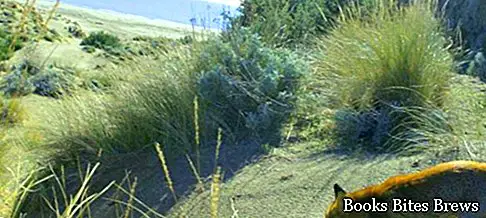What to see in Maremma, an itinerary to discover the territory of this coastal area of Tuscany, a regional park extended between archaeological areas and cities to visit.
Tourist information
Maremma proper is the Maremma of Grosseto, a territory that extends in southern Tuscany and includes the province of Grosseto, the coast between the Gulf of Follonica and the mouth of the Chiarone stream, which flows into the sea south of the Argentario promontory , and the lower Ombrone Valley.
The internal areas of the Grosseto Metalliferous Hills, the Albegna and Fiora Hills, and the Tufo area are attributed to Maremma, even if they are not geographically. The main towns of the Maremma are Grosseto, Castiglione della Pescaia, Follonica, Orbetello and Massa Marittima.
Among the protected areas, the most important are the Maremma Regional Park, the archaeological area of Vulci and the Uccellina Park.
What see
Grosseto
Grosseto's origins date back to the early Middle Ages.
Its historic center is enclosed by a sixteenth-century hexagonal bastion wall, one of the few examples of late Renaissance military architecture.
Inside there are valuable monuments.
The Cathedral of San Lorenzo was built between the end of the thirteenth century and the beginning of the fourteenth century, in Romanesque-Gothic style, on the site where the parish church of Santa Maria was located.
Over the centuries it has undergone various alterations and renovations, the last of which was in the 19th century.
The Church of San Francesco, built in the Middle Ages, was remodeled in later periods.
Recommended readings- Artimino (Tuscany): what to see
- San Galgano (Tuscany): what to see
- Poggibonsi (Tuscany): what to see
- Castiglione di Garfagnana (Tuscany): what to see
- Tuscany: Sunday day trips
The Church of San Pietro is the oldest religious building in Grosseto.
The Church of Mercy was built as an oratory in the twelfth century.
The Convent of the Poor Clares and the Church of the Bigi, currently deconsecrated, are home to a museum and a university center.
Among the noteworthy civil buildings include the Palazzo Aldobrandeschi, built in the Middle Ages, which appears in neo-Gothic style after the reconstruction occurred in the last century, and the Town Hall, in neo-Renaissance style.
It is also worth seeing the Cassero del Sale, built in the fourteenth century as a place of production and distribution of salt, coming from the salt pans once present on the coast, the Teatro degli Industri, the Palazzo del Vecchio Tribunale, the Palazzo Tognetti and the Palazzo del Genio Civile .
The municipality of Grosseto, although the historic center is of limited size, includes a very large territory and can boast interesting places also in the surrounding villages and countryside.
Castiglione della Pescaia
It is a beautiful seaside resort in the province of Grosseto, with sea and beaches are highly appreciated for their excellent environmental and tourist quality.
The town is dominated by the medieval historic center which is perched on the promontory and culminates with the Castle, a fortification built as a watchtower around the tenth century, by the Pisans, its current appearance is the result of extensions and renovations that took place in the following centuries.
From this position you can admire a wonderful panorama.
Massa Marittima
It is a town in the province of Grosseto, located in the area of the metalliferous hills and is a fascinating city of art.
The historic center of Massa Marittima, which stands on a hill at about 380 meters above sea level, is divided into the old city, surrounded entirely by the defensive walls, and in the new city, partially delimited by the defensive walls, the two parts are connected by the door to the Silici.
The heart of the old town is Piazza Garibaldi, with its characteristic irregular plan, overlooked by the most prestigious buildings in the city, starting with the Cathedral of San Cerbone, a Romanesque-Pisan masterpiece built between the end of the 12th century and the first mid-13th century.
The Palazzo del Podestà of the thirteenth century houses the Archaeological Museum and the Pinacoteca.
Worthy of attention are the thirteenth-century palace of the Counts of Biserno, the Palazzo del Comune, built in medieval times, and the Logge del Comune, located in front of the Palazzo Comunale, on the lower floor of Palazzo Malfatti.
The loggias were the seat of public meetings of the free medieval municipality and subsequently the market place until the second post-war period.
Other interesting monuments are the Palazzo dell'Abbondanza, the ancient mint, the birthplace of San Bernardino, the Fortezza Senese and the Torre del Candeliere.
The Palazzetto delle Armi, in the new city, in addition to the beautiful religious architecture, including the Gothic style Church of San Francesco, the deconsecrated Church of San Pietro all'Orto, from the 14th century, the Church of San Rocco and the Church of Sant'Agostino, represent other monuments that deserve to be seen.




